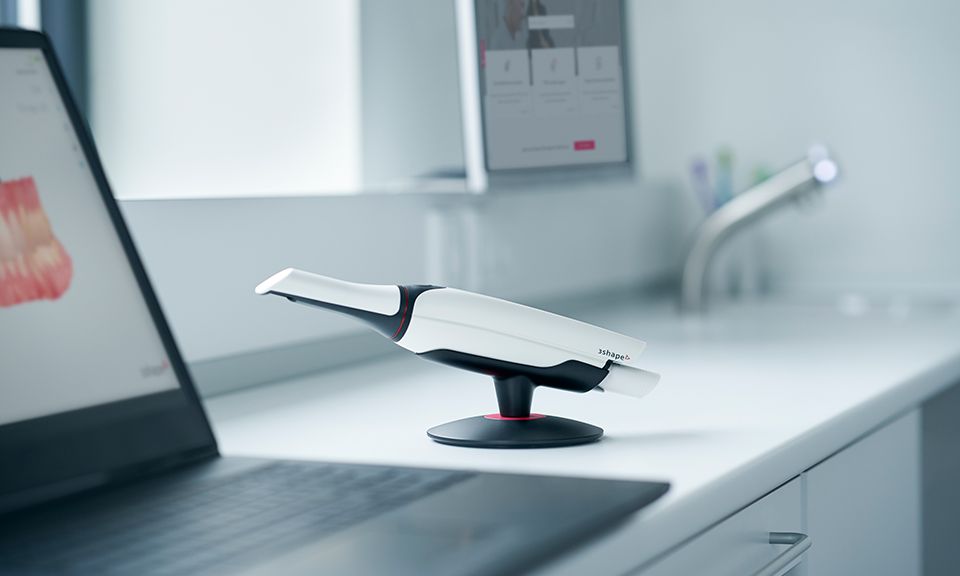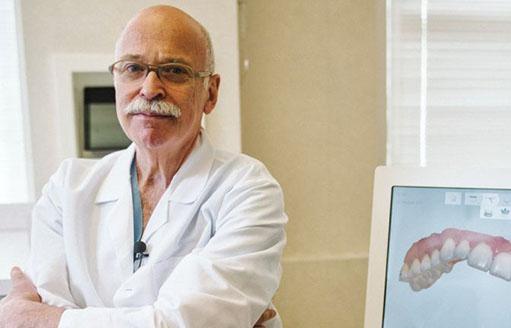- Home
- Blog
- Digital dentistry
- Are intraoral scanner prices s...
Are intraoral scanner prices stopping you from going digital? Then read this.
Recently, 3Shape was fortunate to speak with, now-retired practitioner, Dr. Jonathan L. Ferencz. Dr. Ferencz is not only a renowned lecturer and member of numerous dental organizations, but also a strong advocate for digital dentistry. We appreciate him taking the time to talk about a subject he is very passionate about.
Are intraoral scanners too pricey for the typical practitioner?

“Well… let’s put this in context. Historically, dentists are pretty poor businesspeople. They don't really receive much business training in dental school.
Schools do not really prepare them for managing a practice. Maybe they take some courses, usually after they graduate, but frequently it's too little, too late.
Here’s an example of what happened to me.
During the crash of the market in 2008. When the economy was really down and dental practices were hit very hard, I decided to invest in technology.
This was at a time when my peers were laying off staff and switching their technicians from salary-based compensation to production-based compensation. One of my former students even told me that he was turning the lights off in some of his operatories.
I thought about it. And I said, even if I have a room that's empty, I’m going to keep the lights on. I want people to think that I'm busy and very successful. I never laid off anyone, nor changed anyone's salary.
I decided that if someone is going to take less money, it's going to be me and not my staff.
During this period, I used the downtime to do some research and invest in our practice. I figured that no matter what, the market was going to turnaround. It will always turnaround as long as there are people in New York City with teeth.
Now in terms of investment, I decided to go digital and purchase milling equipment, design software, a scanner, education, and the learning curve.

As predicted, business began to pick up and we stayed busy. Colleagues who laid off staff could not ramp up as quickly. As a result, our return on the investment in technology was off the charts.
When accounting for the savings in chair time, a reduction in material and labor costs, and the increase in new patients, the equipment paid for itself in a few short years. So, it is not the cost of the equipment that is the most important factor…it is how much you use it!
“We need to be better businesspeople as dentists.”
With that model in mind, what would you tell a recent dental graduate? Should they buy an intraoral scanner?
“I think that decision should be based on how many indirect restorations and dentures they are presently producing and if they commit to using the new equipment.
In many cases, graduates have built up tremendous debt just going to school. So, they really must understand how to rapidly build their practice. There are a lot of marketing skills involved.
I know dentists who have practiced for 20-30 years who can't get out of debt or don't have enough money to retire. And I know others who are two years out of school and already own two practices. And both practices are making money. So again, it’s about being a smart, savvy, and maybe, a little bit lucky.”
Would you say then that if a dentist is producing an X number of crowns, they should go digital?
“If your practice is not digital and a patient comes to you for a crown, it's three visits and most likely an uncomfortable temporary. If they are treated by an experienced CAD/CAM practitioner, it’s a single two hour visit for the crown. Who are you going to go to?
I'm sure every dentist has experienced a crown that he or she has been seating at 4:00 o'clock on a Friday afternoon. The crown doesn't fit because there was an error in the impression and another impression has to be taken. At that point, you can’t even think about what happened to your profit margin. It's zero.
Maybe someone made a mistake and you misread, or you misjudged the powder liquid ratio, or you were not paying attention, or you took a phone call while you're trying to do something, and you ruin the crown. That means the patient is coming back tomorrow morning. You’ll probably work until 10:00 o'clock that night.

“Now if you are taking digital impressions, you get it right the first time. We rarely make mistakes.”
After I went digital with my practice, you could walk in any day at 4:00 o'clock and everyone was gone. Even the technicians were gone at 4:00 o'clock because we did everything in advance. We were so automated that we rarely made mistakes.
When you do things by hand, there can be a lot of variation. So, when we went digital, everyone in my practice bought into it.”
So, for you, the buying criteria for an intraoral scanner should be based on indirect restorative production?
“Mostly, but it depends on your practice, for example, an orthodontist can certainly benefit from an intraoral scanner. But for GPs and prosthodontists, we use an intraoral scanner for restorative work. But nowadays, scanners like TRIOS, are adding so many more indications like clear aligners, dentures, and implants, as well as features to engage patients with, many doctors don’t even realize how many ways a scanner can help them build their practice.
To be honest, digital dentistry changed the life of not just me, but everyone in my practice.
Dr. Mark McOmie created a formular for assessing intraoral scanner ROI value based on crown production. You can read his story or calculate your own ROI below.
QUICKLY CALCULATE YOUR ROI HERE
Select Your Country
Select Your Currency
*Country selection determines the price averages used in our calculations.
Revenue Comparison
Monthly
Profit
Are intraoral scanners expensive?
“I don't ever advocate spending more money unnecessarily. But you have to understand that when you are choosing an intraoral scanner it’s not just the speed of the of the scanner that matters. You also need to weigh other factors.
It’s the brand’s reliability, repairs, customer support, how many years are you likely to use it before it obsolete? What the company has in additional offerings? There is also value in buying from a premium company. This can, but not always, be worth the extra money.”
So, warranties or subscriptions should be considered in the price?
“If you are a really, really, experienced dentist and have had a dozen scanners and you're buying another one, you may not need one.
But, if we compare buying a scanner to an automobile, would you ever consider owning a car without a warranty?
“A smart businessman knows the value of a warranty. If the service model is attractive, if it works, and if it provides the services that you're paying for. Then it’s imperative.”
For example, 3Shape has really revamped its subscription in terms of what it provides and delivers. I think customers are willing to pay if they feel confident in the service and perceive value. But it's nice to have an alternative like 3Shape has done where you can choose not to have your scanner covered too. But personally, that would worry me.
If you think that you don't need it and want to save money, then you're on your own and you’ll only pay per incident. But I’ve seen scanners get dropped.
In business, nobody can provide support for free. You name a model where support is free. No, I fully agree that there is a need for it. But as a customer, you need to feel like you’re getting your money’s worth. That’s why it’s good when companies like 3Shape provide customers with learning opportunities, express replacements, and phone support as part of the coverage.”
Your final verdict… should a dentist own an intraoral scanner?
“100%! Many dentists are afraid to spend money on big ticket items because they don't really understand how it's going to change their business. Rather than focus on cost, I would recommend focusing on utilization. A dentist who doesn’t use the equipment has made a terrible business decision.
For me, the most amazing phenomenon that I experienced with CAD/CAM dentistry, was that for the most part, I was able to do the same amount of dentistry in half the number of visits. Think about that for a minute… half the visits!
I also never expected that patients would embrace the technology as much as I did. Referrals increased and my skill in technology became an effective marketing tool to grow my practice.
When you begin your workflow with an intraoral scanner, the accuracy is absolutely great. I would argue that it is better. The consistency is unequaled. With digital, there's no chance for distortion. It's completely correct. It's enormously valuable.
“I still have patients that thought that a restoration must be better because it's handmade. The reality is the opposite. It's better because it is machine made!”